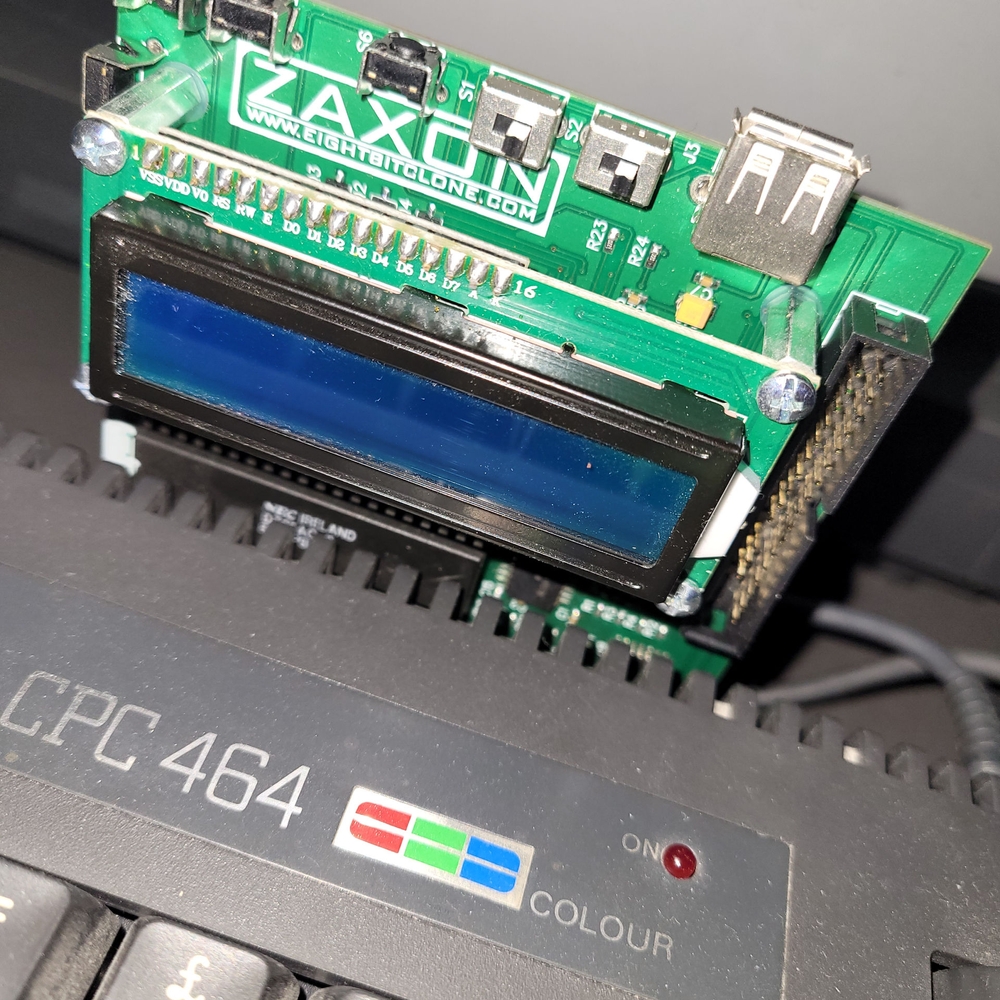Exploring DDI-X range by Zaxon

I purchased the DDI3 USB floppy emulator for my Amstrad CPC in 2016. The DDI3 also allows you to connect external drives (including the Amstrad FD-1 floppy drive, through a cable modification), and comes with ParaDOS (a replacement for the default AMSDOS). You may still be able to buy the DDI3 via SellMyRetro.com. It is not just a Gotek clone, but a versatile multifunctional extension for the beloved Amstrad.
I noticed that DDI5 is also available for sale on the same site, and there is also DDI4. These devices were created by Piotr Bugaj (aka Zaxon) and have collectively sold more than 900 copies over the years. Piotr’s naming convention for these devices is not consistent, as he spells them as “DDI4”, “DDI 4”, and “DDI-4”. My choice would have been to use DDI-4, as the original floppy interface for Amstrad CPC 464 was called DDI-1. However, the most common spelling used by the Amstrad community seems to be DDI3, DDI4, and DDI4. Therefore, in this note, I will use the same format.
Are DDI4 and DDI5 simply improved versions of DDI3? Not exactly. While DDI4 does not include the floppy emulator, it does have a memory extension of 512 KB, a passthrough connector to chain other expansion cards, and a sleek 3D-printed enclosure. On the other hand, DDI5 is considered the “ultimate” revision as it reintroduces the floppy emulator to the package.
By browsing the CPCWiki, I also learned that Piotr had previously produced something called the DDI-1 clone before DDI3 (as well as a ver 2.0). These DDI-1 clones, along with the DDI4, can be connected to HxC or Gotek devices to establish floppy drive emulation. As a side note, there was also the DDI-2 with similar functionality, but this was not a project by Piotr.
DDI3 and DDI5 are currently distributed with FlashFloppy. The version of DDI3 that I received came with the HxC software, which initially confused me about whether it was an HxC- or Gotek-based device. However, it turns out that DDI3 uses the same STM32F microprocessor as the older Gotek models. The firmware installed on my DDI3 was the HxC floppy emulator firmware for Gotek drives.

Are there any issues with these devices? I have personal experience with my DDI3 only, and it has worked very well. However, sometimes when I use the device with the dk’tronics 64 KB memory expansion unit, my Amstrad does not boot up. When I use them separately, they always work fine, but when used together, there seems to be an occasional issue. It could be a power issue on Amstrad, or perhaps there is contact issue on memory expansion passthrough, who knows.
The main problem is the vertical orientation and the height of the device, which can easily block the view to the monitor. To not make things worse, it is recommended to purchase a mini-USB drive that does not add any additional height. Both DDI4 and DDI5 have the same design, so the height will still be a concern. However, a printed enclosure does enhance the overall aesthetics.
Another issue with all these Zaxon devices is the lack of documentation. Most retro-devices, even if they are “just a hobby,” come with at least some documentation. If you require support and do not receive a response from Piotr, you can try the CPCWiki community for assistance.
Despite the limited support, Zaxon has received a 99% positive feedback rate in the Sell My Retro store. Personally, I am also satisfied with the product. If I didn’t already own the memory expansion unit, I would definitely consider purchasing the DDI5. As for the DDI3, I plan to 3D print an enclosure in the future and find a way to update FlashFloppy.
